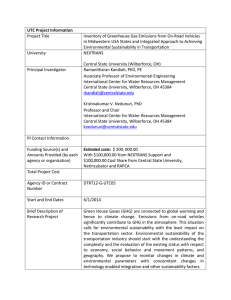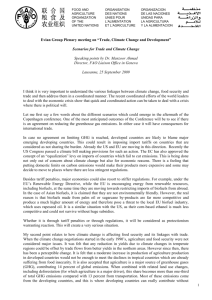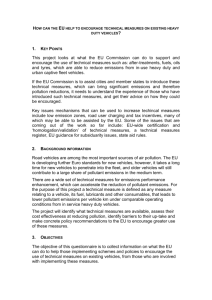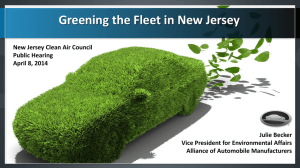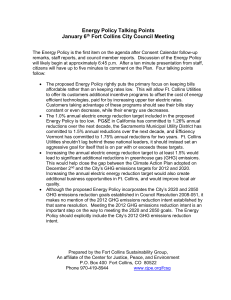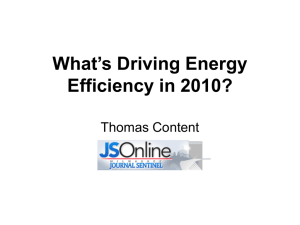Energy, Greenhouse Gas and Economic Implications of Natural Gas
advertisement
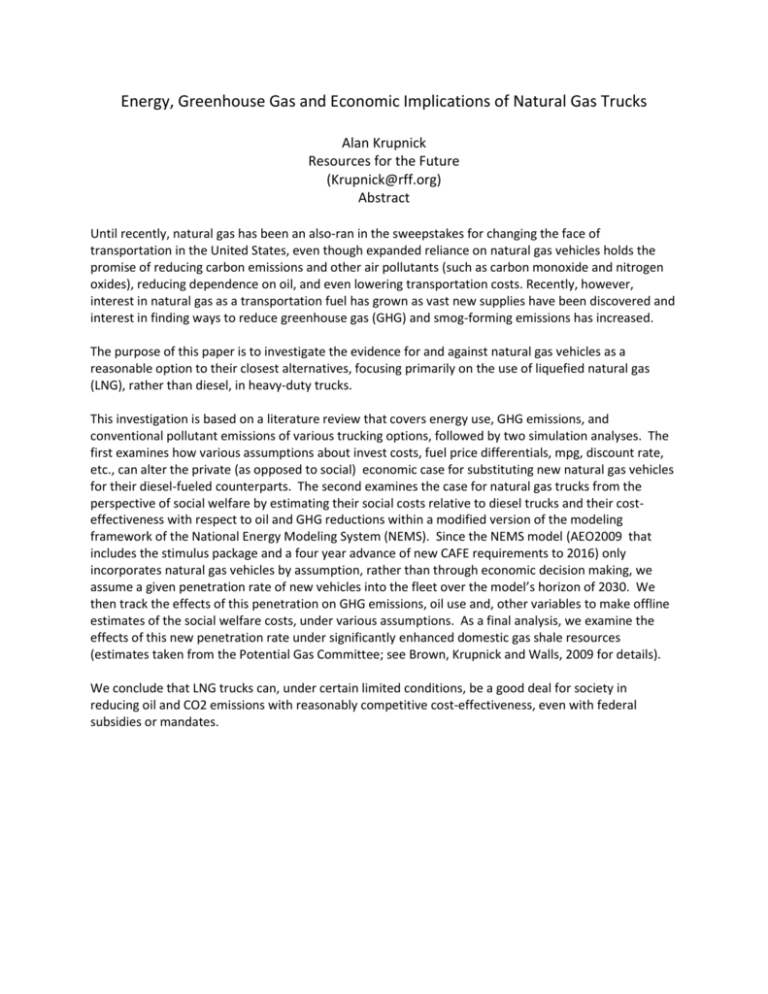
Energy, Greenhouse Gas and Economic Implications of Natural Gas Trucks Alan Krupnick Resources for the Future (Krupnick@rff.org) Abstract Until recently, natural gas has been an also-ran in the sweepstakes for changing the face of transportation in the United States, even though expanded reliance on natural gas vehicles holds the promise of reducing carbon emissions and other air pollutants (such as carbon monoxide and nitrogen oxides), reducing dependence on oil, and even lowering transportation costs. Recently, however, interest in natural gas as a transportation fuel has grown as vast new supplies have been discovered and interest in finding ways to reduce greenhouse gas (GHG) and smog-forming emissions has increased. The purpose of this paper is to investigate the evidence for and against natural gas vehicles as a reasonable option to their closest alternatives, focusing primarily on the use of liquefied natural gas (LNG), rather than diesel, in heavy-duty trucks. This investigation is based on a literature review that covers energy use, GHG emissions, and conventional pollutant emissions of various trucking options, followed by two simulation analyses. The first examines how various assumptions about invest costs, fuel price differentials, mpg, discount rate, etc., can alter the private (as opposed to social) economic case for substituting new natural gas vehicles for their diesel-fueled counterparts. The second examines the case for natural gas trucks from the perspective of social welfare by estimating their social costs relative to diesel trucks and their costeffectiveness with respect to oil and GHG reductions within a modified version of the modeling framework of the National Energy Modeling System (NEMS). Since the NEMS model (AEO2009 that includes the stimulus package and a four year advance of new CAFE requirements to 2016) only incorporates natural gas vehicles by assumption, rather than through economic decision making, we assume a given penetration rate of new vehicles into the fleet over the model’s horizon of 2030. We then track the effects of this penetration on GHG emissions, oil use and, other variables to make offline estimates of the social welfare costs, under various assumptions. As a final analysis, we examine the effects of this new penetration rate under significantly enhanced domestic gas shale resources (estimates taken from the Potential Gas Committee; see Brown, Krupnick and Walls, 2009 for details). We conclude that LNG trucks can, under certain limited conditions, be a good deal for society in reducing oil and CO2 emissions with reasonably competitive cost-effectiveness, even with federal subsidies or mandates.

